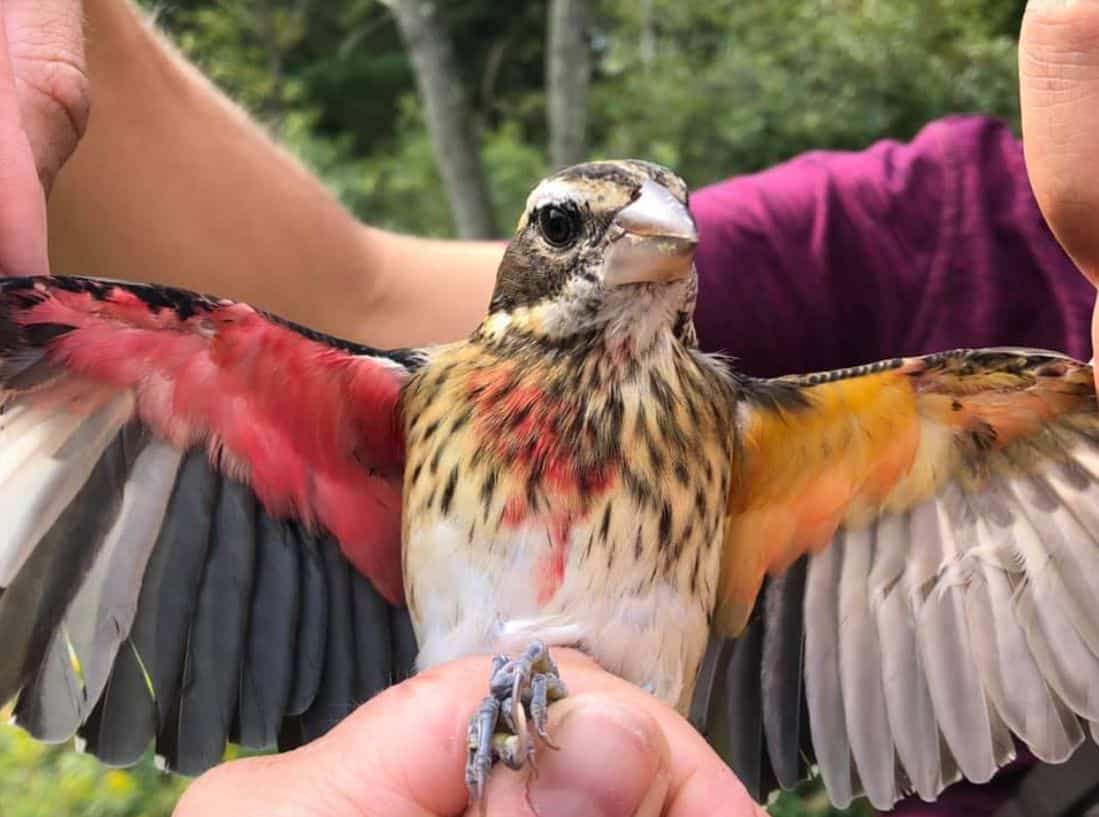Researchers at the Powdermill Nature Reserve, located in Pennsylvania, USA, found a Rose-breasted Grosbeak gynandromorph with pink and black plumage, typical for males, on one half of the body; and one of yellow and brown colors, characteristic of females, on the other side.
Scientists think it could be a genetic abnormality known as bilateral gynandromorphism. Unlike true hermaphroditism, which contemplates having both male and female reproductive tissues, gynandromorphs display male and female characteristics on either side of their body.

Even the back of the wings and the tail of the found bird show crucial differences: the left side is a shade browner and the right side – more black.
“The entire banding team was very excited to see such a rarity up close, and are riding the high of this once-in-a-lifetime experience. (…) One of them described it as ‘seeing a unicorn’,” said Annie Lindsay, manager of the bird banding program at Powdermill.
A popular question, according to a statement from the Carnegie Museum of Natural History, is whether this bird has the ability to reproduce.
“Since usually only the left ovary is functional in birds, and the left side of this bird is the female side, this bird theoretically could produce young if it successfully mates with a male,” scientists explain.
However, even with a potentially functional ovary, this lovely bird might not be able to mate. Since these are songbirds, and males attract females with their music, it is unclear whether this bird will be able to attract one with its singing.